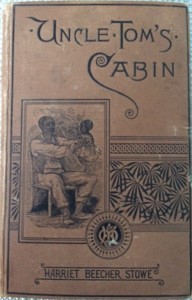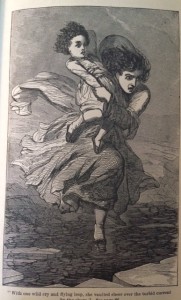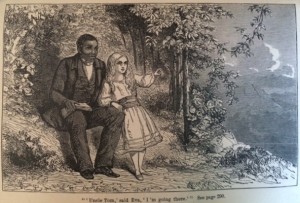By Walter W. Woodward
(c) Connecticut Explored Inc. Summer 2011 Volume 9 Number 3
Subscribe/Buy the Issue!
 As a professional historian—not to mention the state historian of Connecticut—one might expect that I would have read Harriet Beecher Stowe’s Uncle Tom’s Cabin. After all, this is one of the few books that actually changed history. Stowe’s panoramic study of antebellum slavery as seen through the eyes of the long-suffering character Uncle Tom, galvanized Northern resistance to slavery in a way that reportedly led Abraham Lincoln to tell Stowe she was “the little lady whose book started this great war.”
As a professional historian—not to mention the state historian of Connecticut—one might expect that I would have read Harriet Beecher Stowe’s Uncle Tom’s Cabin. After all, this is one of the few books that actually changed history. Stowe’s panoramic study of antebellum slavery as seen through the eyes of the long-suffering character Uncle Tom, galvanized Northern resistance to slavery in a way that reportedly led Abraham Lincoln to tell Stowe she was “the little lady whose book started this great war.”
Though I have long recognized the historical importance of Stowe’s work, I had avoided actually reading it because of another set of associations I connected to “Uncle Tom” that stemmed from the civil rights movement of my own lifetime. For racial justice activists in the 1960s, an “Uncle Tom” was a despicable creature, an obsequious black man always too eager to curry favor with whites. As Harvard historian Henry Louis Gates, Jr. wrote, “We talked about him as the model to be avoided. . . . We knew what an Uncle Tom was, and it was not good.” Gates doubted that anyone who used “Uncle Tom” as a pejorative term in those days had actually read Stowe’s book. Still, the negative connotation of the phrase endured, casting a dim light not just on over-accommodating African Americans, but on Stowe’s book itself.
Finally, early this year, as part of my intellectual engagement with the 150th anniversary of the Civil War, I decided to pick up Uncle Tom’s Cabin and see what about it had caused all that antebellum fuss.
 What a surprise!!! Within the first 20 pages I was swept up into the story with an excitement that kept me eagerly turning pages right to the very last word. Instead of a pandering toady, I found in Tom a Christ-like and Ghandi-esque figure whose forbearance in the face of wretchedly terrible injustice commanded his readers to examine their own consciences with regard to the “peculiar institution” of slavery. This is a story rich in riveting characters, all ensnared in one way or another in the tendrils of slavery and the racism that accompanied and survived it. It has Southern slave owners who hate slavery but cannot quite come to free their slaves; New Englanders who hate slavery philosophically but recoil at the very thought of having contact with African Americans. There is the evil Simon Legree and the saintly Eva; the narcissistic Marie St. Claire, the heroic Eliza, and the loyal George Shelby, who comes too late to keep a promise made to Tom.
What a surprise!!! Within the first 20 pages I was swept up into the story with an excitement that kept me eagerly turning pages right to the very last word. Instead of a pandering toady, I found in Tom a Christ-like and Ghandi-esque figure whose forbearance in the face of wretchedly terrible injustice commanded his readers to examine their own consciences with regard to the “peculiar institution” of slavery. This is a story rich in riveting characters, all ensnared in one way or another in the tendrils of slavery and the racism that accompanied and survived it. It has Southern slave owners who hate slavery but cannot quite come to free their slaves; New Englanders who hate slavery philosophically but recoil at the very thought of having contact with African Americans. There is the evil Simon Legree and the saintly Eva; the narcissistic Marie St. Claire, the heroic Eliza, and the loyal George Shelby, who comes too late to keep a promise made to Tom.
 That said, Uncle Tom’s Cabin is not a perfect book, and it is a product of its time. If you cannot read the “N” word as historical artifact, do not touch it. “Nigger” appears on almost every page, just the way 19th-century Americans used it. The story is also incredibly melodramatic and sentimental. Yet the timeless power of this book to captivate and move readers is attested to by the fact that it has appeared in more than 600 editions.
That said, Uncle Tom’s Cabin is not a perfect book, and it is a product of its time. If you cannot read the “N” word as historical artifact, do not touch it. “Nigger” appears on almost every page, just the way 19th-century Americans used it. The story is also incredibly melodramatic and sentimental. Yet the timeless power of this book to captivate and move readers is attested to by the fact that it has appeared in more than 600 editions.
Make this the year you read—actually read—Uncle Tom’s Cabin.
Read More:
The Beechers: Connecticut’s Most Accomplished Family?
Harriet Beecher Stowe: The Most Famous American
